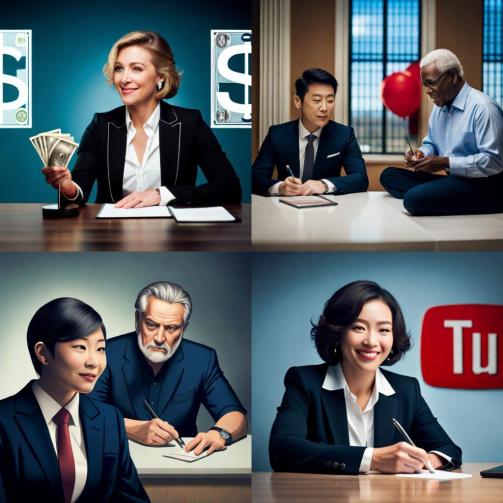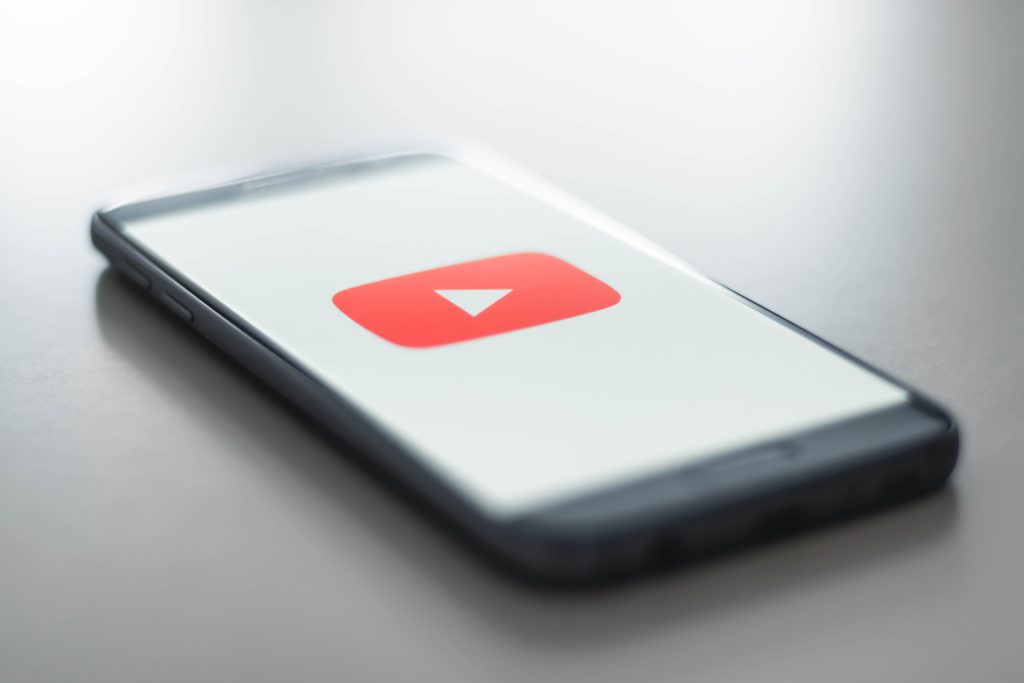


In a world where digital landscapes are continuously expanding, YouTube stands as a colossus, offering a fertile ground for creators and brands to foster mutually beneficial partnerships. The road to acquiring sponsorships on this bustling platform, however, isn’t devoid of competition.
Every creator, be it a budding YouTuber or a seasoned content veteran, dreams of securing that lucrative deal which not only brings in financial rewards but also marks a stamp of recognition and credibility in the digital sphere.
But how does one navigate the bustling marketplace of YouTube to forge these invaluable alliances with brands and businesses? The answer lies in a well-crafted strategy that marries your unique content offering with the marketing objectives of potential sponsors.
In this comprehensive guide, we will unravel the intricacies of securing sponsorships on YouTube, providing you with actionable insights and tools to build partnerships that stand the test of time and foster a community of engaged viewers. Dive in to discover the blueprint to elevating your YouTube channel to new heights through successful sponsorships!
The #1 to make money online with TikTok Search (FREE TRAINING)

One of the initial steps towards making money through YouTube is by embarking on affiliate sponsorships. It involves promoting products or services through your YouTube videos, where you earn a commission for every sale made through your affiliate link. You can seamlessly integrate these links in your video descriptions, encouraging viewers to explore the products you are endorsing.
In order to attract YouTube sponsorships, focusing on crafting quality content is paramount. Brands are more likely to invest in YouTube channels that have a consistent record of producing content that resonates well with their target audience. To accomplish this, make sure to imbibe YouTube SEO techniques to enhance the visibility of your quality YouTube videos.
A polished and professional appearance for your channel can be a magnet for YouTube sponsors. Make sure that your channel’s branding is cohesive and professional. A well-curated media kit showcasing your channel’s statistics and demographics can be a powerful tool in attracting paid YouTube sponsorships.

Securing paid sponsorships is a significant milestone for any YouTuber. It involves collaborating with brands and businesses to create YouTube sponsored videos, where you get paid to promote their products or services. These sponsorships can be a testament to the value and influence your channel brings to potential sponsors.
Creating sample sponsorship content can be a fantastic way to showcase your potential to prospective sponsors. Develop a portfolio of sponsored videos, demonstrating how you can seamlessly integrate brand promotions into your YouTube video narratives without alienating your audience.
The core of any successful YouTube channel lies in its ability to consistently create and upload quality YouTube videos. Utilize state-of-the-art equipment and editing tools to produce content that captivates your audience, encouraging them to engage more with your channel and the sponsored content.

Contrary to popular belief, you don’t necessarily need a massive subscriber base to get sponsored on YouTube. Many brands are looking for niche influencers with a loyal and engaged audience. It is crucial to build a community around your channel, showcasing your ability to influence your viewers’ preferences and choices.
As you venture into the realm of YouTube sponsorships, acquainting yourself with YouTube’s guidelines is essential. Adhering to the platform’s policies can safeguard your channel from potential strikes and violations, ensuring a smooth and successful partnership with brands and businesses.
YouTube’s Community Guidelines define what content is and is not allowed on the platform. These guidelines are in place to protect the community from harmful content, harassment, and spam. They apply to everyone, and to all types of content on YouTube – such as videos, comments, links, and thumbnails.
Content that is not allowed on YouTube includes:
Age-restricted content
Some content may not be appropriate for viewers under 18 years of age, even if it doesn’t violate YouTube’s Community Guidelines. In these cases, YouTube’s review team will place an age restriction on the video so that it will not be visible to viewers under 18 years of age, logged-out users, or to those who have Restricted Mode enabled. Creators can also choose to age-restrict their own content at upload if they think that it’s not suitable for younger audiences.
Strikes and terminations
If a channel violates YouTube’s Community Guidelines, it may receive a strike. After three strikes within a 90-day period, the channel will be terminated. Channels that are dedicated to violating YouTube’s policies or that have a single case of severe abuse of the platform may be terminated without receiving any strikes.
Appeals
If a creator believes that their video or channel has been wrongfully removed or terminated, they can appeal the decision. YouTube’s teams will then re-review the content and make a final decision.
YouTube’s Community Guidelines are important for creating a safe and welcoming platform for everyone. By following these guidelines, creators can help to keep YouTube a positive and informative place for everyone to enjoy.

Having a small YouTube channel doesn’t preclude you from securing sponsorships. Focus on carving out a niche and building a loyal audience base. Brands often prefer partnering with micro-influencers as they tend to have a more engaged audience. Showcase your channel’s unique value proposition, and don’t hesitate to reach out to potential sponsors with a well-prepared media kit.
As you move forward on your journey to securing sponsorships, remember that establishing a strong connection with potential sponsors can amplify your chances of securing partnerships. Here’s how you can build a bridge between your YouTube channel and the brands:
A media kit is your portfolio, highlighting the best attributes of your YouTube channel. It should encapsulate key statistics, such as viewer demographics, engagement rates, and notable achievements. This tool can potentially pique the interest of brands looking for collaborations that align with their values and target audience.
Harness the power of YouTube SEO to increase the visibility of your channel. A well-optimized channel can attract more viewers, thereby increasing the appeal of your channel to potential sponsors. Learn the nuances of keyword integration, creating engaging thumbnails, and crafting compelling video descriptions to make your channel more discoverable.
An engaged community is a testament to the influence and reach of your channel. Make sure to interact with your audience regularly through comments and live sessions. A robust community engagement strategy can make your channel more attractive to sponsors, as it often translates to better reception and outreach for sponsored videos.
Maintaining a portfolio of quality YouTube videos can work wonders when approaching sponsors. It serves as a testament to your commitment and expertise in creating content that resonates with the audience. Showcase a range of content, including tutorials, reviews, and vlogs, to demonstrate your versatility and ability to integrate sponsored content seamlessly.
Networking is a significant aspect of building partnerships. Attend industry events, webinars, and engage with other creators to broaden your network. A well-connected YouTube creator has higher chances of getting referrals and recommendations, facilitating smoother collaborations with brands and businesses.

Once you secure sponsorships, it’s essential to measure the success of your collaborations. Utilize analytics tools to track the performance of your sponsored videos. Share this data with your sponsors to build a long-lasting relationship based on transparency and mutual growth.
In the ever-competitive YouTube space, understanding how to secure sponsorships and build symbiotic relationships with brands is vital for sustained success. Here, we will delve deeper into the nuances of getting sponsored on YouTube.
In the YouTube ecosystem, content reach is significantly influenced by the YouTube algorithm. To expand your reach, focus on creating high-quality content that resonates with your audience. Engaging video content can potentially increase your subscriber count, making your channel more appealing to potential YouTube sponsors. Remember to incorporate social media platforms in your strategy to further amplify your reach.
Don’t hesitate to take the initiative to directly reach out to brands. Create a compelling pitch, showcasing your video portfolio and explaining why your channel would be a great platform for their sponsored content. Include video examples and social media links in your pitch to provide a comprehensive view of your online presence.
Aside from sponsorships, consider exploring other monetization avenues such as product or affiliate sponsorships, offering memberships, and creating paid communities. Small channels can also benefit from YouTube’s Partner Program, which provides an opportunity to earn money through ads and channel memberships.
Offer potential sponsors video package deals where they get to sponsor a series of video uploads, potentially at a discounted rate. This not only ensures a steady stream of sponsored content but also builds long-term relationships with brands, benefiting both parties.
Building a substantial base of YouTube subscribers is essential. Focus on creating quality content consistently, which will help in attracting a loyal following. Additionally, having at least one video that showcases your channel’s essence, like a channel trailer, can help in attracting more subscribers.
Apart from seeking sponsorships, consider offering memberships and creating paid communities where your most loyal followers can get exclusive content, perks, and a closer connection to you. This can be a substantial revenue stream, especially for small YouTube channels.
The #1 to make money online with TikTok Search (FREE TRAINING)

Contrary to popular belief, subscribers do not inherently dislike branded content. However, it’s important that the sponsored video content remains authentic and aligns with your channel’s ethos. Being transparent about sponsorships in the video description can help maintain trust with your audience.
Sponsorship payouts can vary greatly depending on various factors including the brand’s budget, your channel’s reach, and the nature of the sponsorship. Typically, brands consider your channel’s engagement rate, subscriber count, and the quality of your content when determining sponsorship rates.
Initiate your journey into the world of sponsorships by creating professional branded content today. Focus on crafting content that not only meets the brand’s expectations but also resonates with your audience. Maintaining a balance between sponsored content and your regular video uploads is key to successful influencer marketing.
Develop a list of potential brands that align with your channel’s niche. Research and identify brands that have a history of collaborating with YouTube creators. An outreach list can serve as a structured roadmap in approaching potential sponsors for collaborations.
Several brands are renowned for collaborating with YouTube creators. Some popular examples include Audible, Skillshare, and NordVPN. These brands often partner with creators for product sponsorships, offering lucrative deals that are beneficial for both parties.
Understanding the CPA model is essential for YouTube creators venturing into affiliate marketing. This model means you earn a commission for every action (like a sale or signup) completed through your brand’s affiliate program link, which you can include in your video description.
In conclusion, securing sponsorships on YouTube involves a multifaceted approach, encompassing the creation of high-quality content, building a loyal audience, and proactive outreach to potential sponsors. Equip yourself with these strategies and commence your journey towards a successful YouTube career with fruitful sponsorships and collaborations.

In the digital age, monetizing YouTube channels through sponsorships has become a viable source of income for many creators. The potential earnings can vary substantially based on several factors, including the type of sponsorship, the reach of your channel, and the niche you operate in. In this article, we will delve into the intricacies of YouTube sponsorships and how much you can potentially earn from them.

Affiliate sponsorships are arrangements where creators earn a commission for every sale made through a link they share. The earning potential here depends on the sales conversion rate. Typically, commissions can range from a small percentage to up to 50% of the product’s price.
In product sponsorships, creators are paid to promote a product through their videos. Payments can be a one-time fee or based on a Cost Per Action (CPA) model. The average earnings for this type of sponsorship can vary widely, from a few hundred to several thousand dollars per video, depending on the channel’s reach and engagement rate.
This involves collaborating with brands for a series of promotions. The payments are usually more substantial, as it involves a comprehensive promotional campaign. Creators can potentially earn from a few thousand to tens of thousands of dollars for such partnerships.
Ad integrations are where a portion of a video is dedicated to promoting a brand or product. The pricing for this can be based on the number of views the video receives. On average, creators can charge anywhere between $10 and $50 per 1000 views.
The subscriber count, view count, and engagement rate of a channel play a significant role in determining how much one can earn from sponsorships. Brands are likely to pay more for channels with a higher number of engaged subscribers.
Channels operating in lucrative niches like technology, finance, and beauty often command higher sponsorship rates. Moreover, if a channel’s audience demographics align well with a brand’s target audience, it can significantly boost the sponsorship value.
High-quality content that resonates well with the audience can command higher sponsorship rates. Brands are keen to associate with creators who produce engaging and professionally crafted content.
Sometimes, brands may ask for exclusivity, meaning the creator cannot promote competing products for a specified period. Such clauses can potentially increase the sponsorship’s monetary value.
Creators with strong negotiation skills can secure better deals. Being able to articulate the value proposition effectively can help in commanding higher rates.
While it’s challenging to pinpoint exact figures, a general rule of thumb that many YouTubers follow is the “CPM rule.” Under this, creators charge brands anywhere between $20 and $50 per 1000 views. So, for a video that garners 100,000 views, a creator can potentially earn between $2000 and $5000.

In the dynamic and ever-evolving landscape of YouTube, the reigns of the highest earners are continually shifting. These remarkable creators, from various backgrounds and niches, have demonstrated that with innovation, engagement, and a keen understanding of audience preferences, it is possible to build a lucrative career on the platform.
They have turned their YouTube channels into powerful brands, forging successful partnerships and generating revenue through multiple streams, including advertising, sponsorships, and merchandise.
These top earners symbolize the epitome of what is attainable on YouTube, serving as beacons of inspiration for aspiring creators around the globe. Their success stories illuminate the path for others, showcasing that with passion, perseverance, and strategic monetization, the sky is truly the limit in the YouTube universe.





